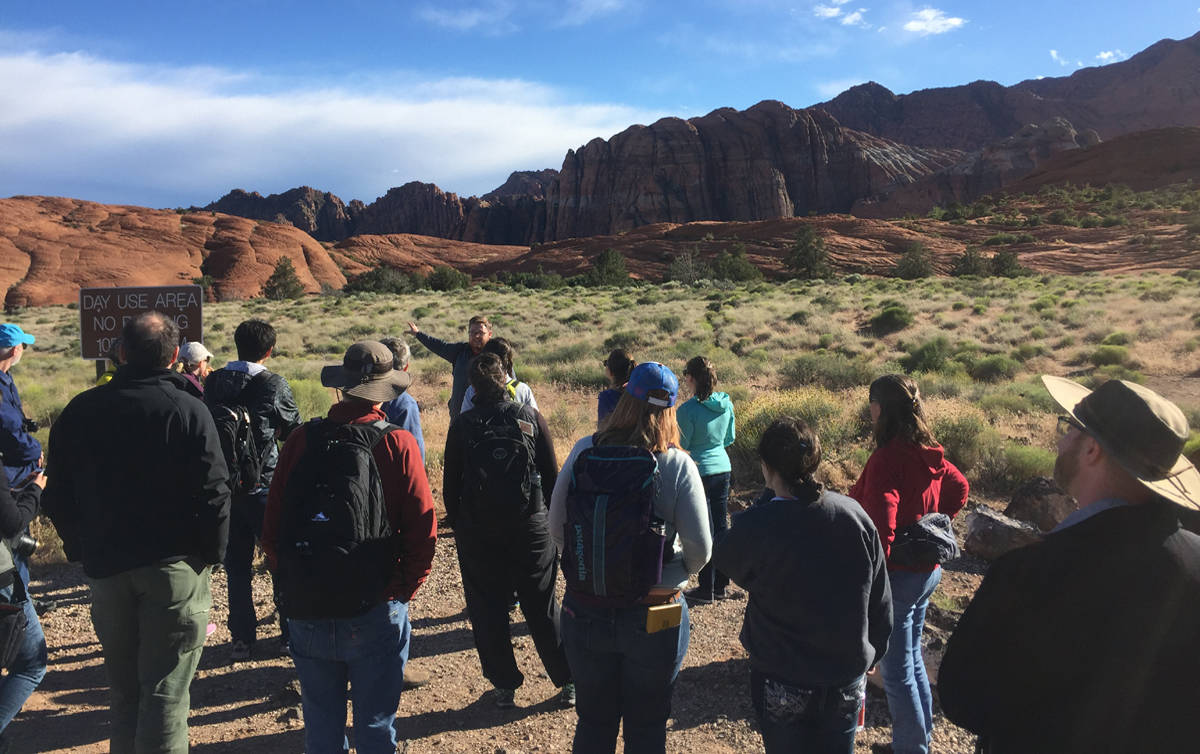
The fifth International Planetary Dunes Workshop was held recently in St. George, supporting current efforts to explore the further reaches of the solar system. The space science workshop included a day trip to Zion National Park and Coral Pink Sand Dunes State Park.
Supported by the Lunar and Planetary Institute, the NASA Mars Exploration Office, the NASA Solar System Workings Program, and the U.S. Geological Survey, the workshop was convened by Dr. Timothy Titus from the U.S. Geological Survey office in Flagstaff, Arizona, and Dr. Gerald Bryant, DSU assistant professor of geology and coordinator of the Colorado Plateau Field Institute.
International Planetary Dunes Workshops are held every two or three years. They provide a forum for terrestrial and planetary Aeolian scientists to share developments they’ve made and exchange new ideas concerning the investigation of wind-related processes that form and maintain dune fields on Earth and other planetary bodies.
Workshop attendees presented the latest remote sensing data and discussed formation theories for dunes located on Mars, Venus and Titan, the largest satellite of Saturn. The development of Earth analogues for surface processes on these planetary bodies was a major thrust of this year’s workshop, which featured invited contributions from researchers focused on dune processes in both sub-aerial and sub-aqueous terrestrial environments.
While at Zion, workshop attendees focused on the implications of extensive cross-sectional exposures of ancient Aeolian dune deposits. The trip to the Coral Pink Sand Dunes allowed researchers to explore an active dunefield with a variety of dune types developed within topographic constraints and shaped by seasonally reversing winds. Additional evening trips to Snow Canyon, Sand Cove, and Moccasin Mountain provided opportunities for more detailed examination of the architecture of the Navajo Sandstone.



